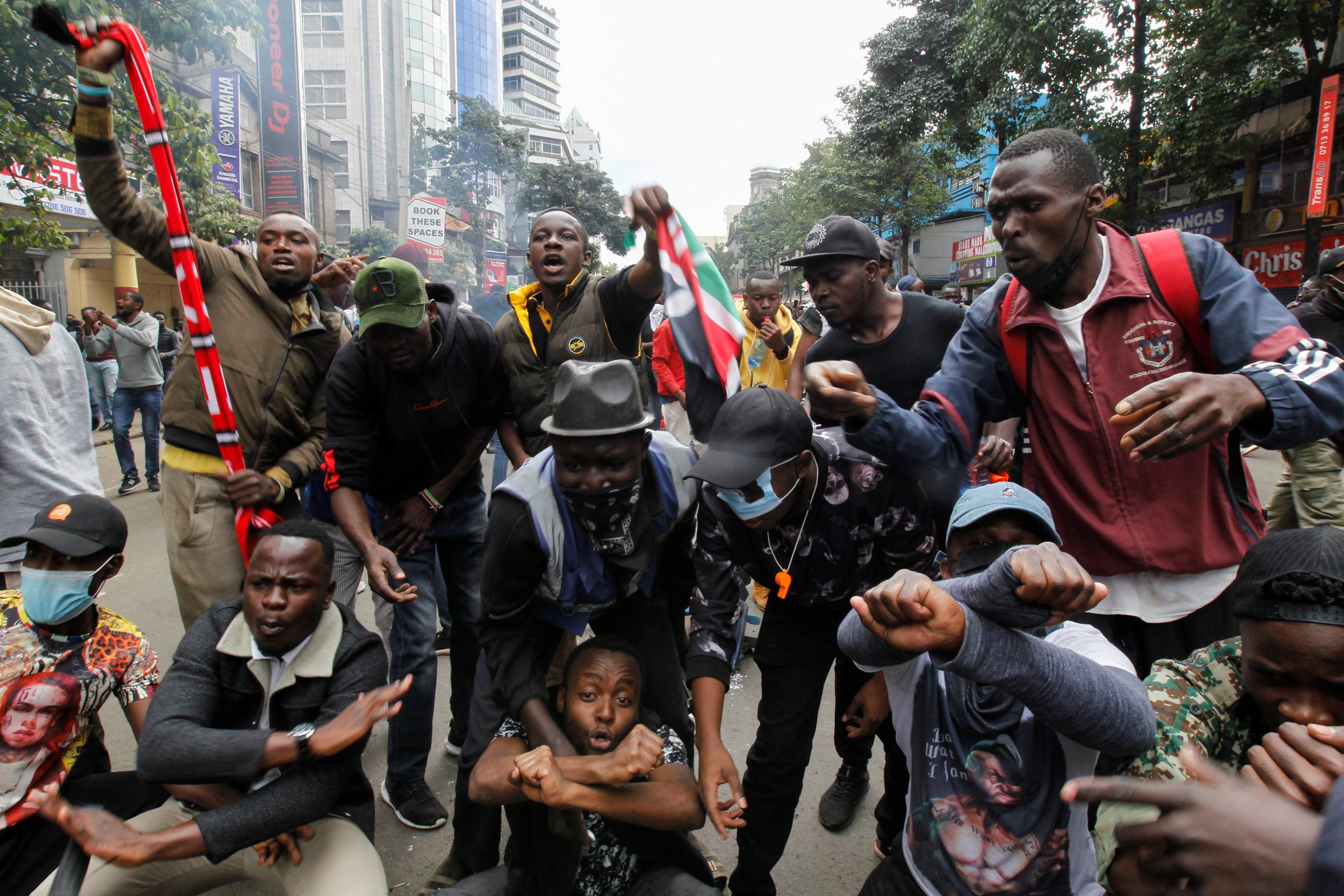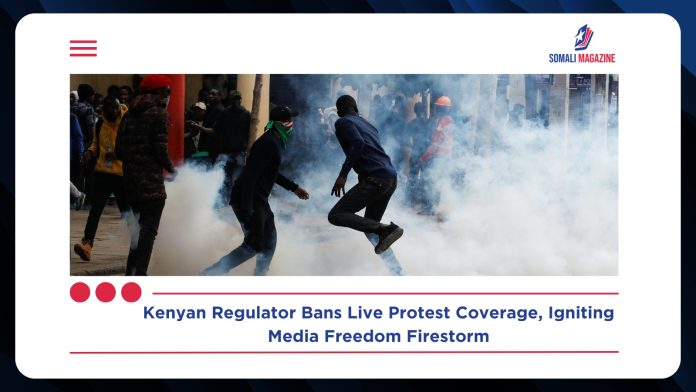Facebook Twitter (X) Instagram Somali Magazine - People's Magazine
The Kenyan regulator has issued a sweeping ban on the live broadcast of ongoing anti-government protests across the country, drawing sharp criticism from media watchdogs and civil society groups who say the move undermines press freedom and public access to information. The directive, issued by the Communications Authority of Kenya (CA), comes amid widespread demonstrations marking the first anniversary of the Gen Z-led protests that erupted in 2024 over economic grievances and governance concerns.
In a statement released Wednesday, CA Director-General David Mugonyi ordered all television and radio stations to immediately cease live coverage of the protests, citing alleged violations of Articles 33(2) and 34(1) of the Constitution and Section 46I of the Kenya Information and Communications Act. The regulator warned that failure to comply would result in regulatory action, including possible suspension of broadcast licenses.
“The live coverage of the June 25th, 2025 demonstrations is contrary to constitutional provisions and broadcasting regulations,” Mugonyi stated. “All licensed broadcasters are directed to stop any live coverage of the demonstrations forthwith.”
The ban has already had a chilling effect, with several free-to-air broadcasters reportedly taken off the Signet platform, effectively blacking out real-time visual and audio reporting from protest hotspots in Nairobi, Mombasa, Kisumu, Nakuru, and at least 20 other counties.
The Kenya Editors Guild (KEG) swiftly condemned the move, calling it a gross violation of constitutional rights and a dangerous precedent for media independence. “CA’s claim that it is acting under Articles 33 and 34 is legally and factually flawed,” KEG said in a statement. “These provisions protect free expression, with clear limits only on hate speech, incitement, and propaganda—not on responsible journalism. Live, factual reporting by licensed media is not a threat—it’s a civic duty.”

Article 33(2) of the Constitution restricts freedom of expression only in cases involving hate speech, incitement to violence, or advocacy of hatred. Article 34(1) guarantees the freedom and independence of all media, while Section 46I of the KICA Act outlines the responsibilities of licensed broadcasters, including the obligation to provide fair and accurate reporting.
The protests, largely driven by young Kenyans, have gained momentum over the past week, with demonstrators demanding accountability, economic reforms, and an end to police brutality. The anniversary of last year’s Gen Z uprising has reignited public anger, with social media platforms flooded with videos and images of tear gas, arrests, and clashes between protesters and anti-riot police.
By restricting live coverage, critics argue that the government is attempting to control the narrative and suppress dissent. Human rights organizations have warned that the blackout could embolden security forces to act with impunity, shielded from public scrutiny.
“This is not just a media issue—it’s a democracy issue,” said a spokesperson from Article 19 Eastern Africa. “When the public is denied access to real-time information, accountability suffers, and abuses go unchecked.”
Despite the ban, citizen journalists and digital activists have continued to stream footage on platforms like TikTok, X, and Facebook, bypassing traditional media channels. Hashtags such as #GenZProtests, #MediaFreedomKE, and #StopTheBan have trended nationwide, reflecting widespread public resistance to the directive.
As tensions escalate, legal experts predict a constitutional challenge to the CA’s directive, with media houses and civil society groups expected to file petitions in court. The outcome could set a landmark precedent for the future of press freedom in Kenya.

